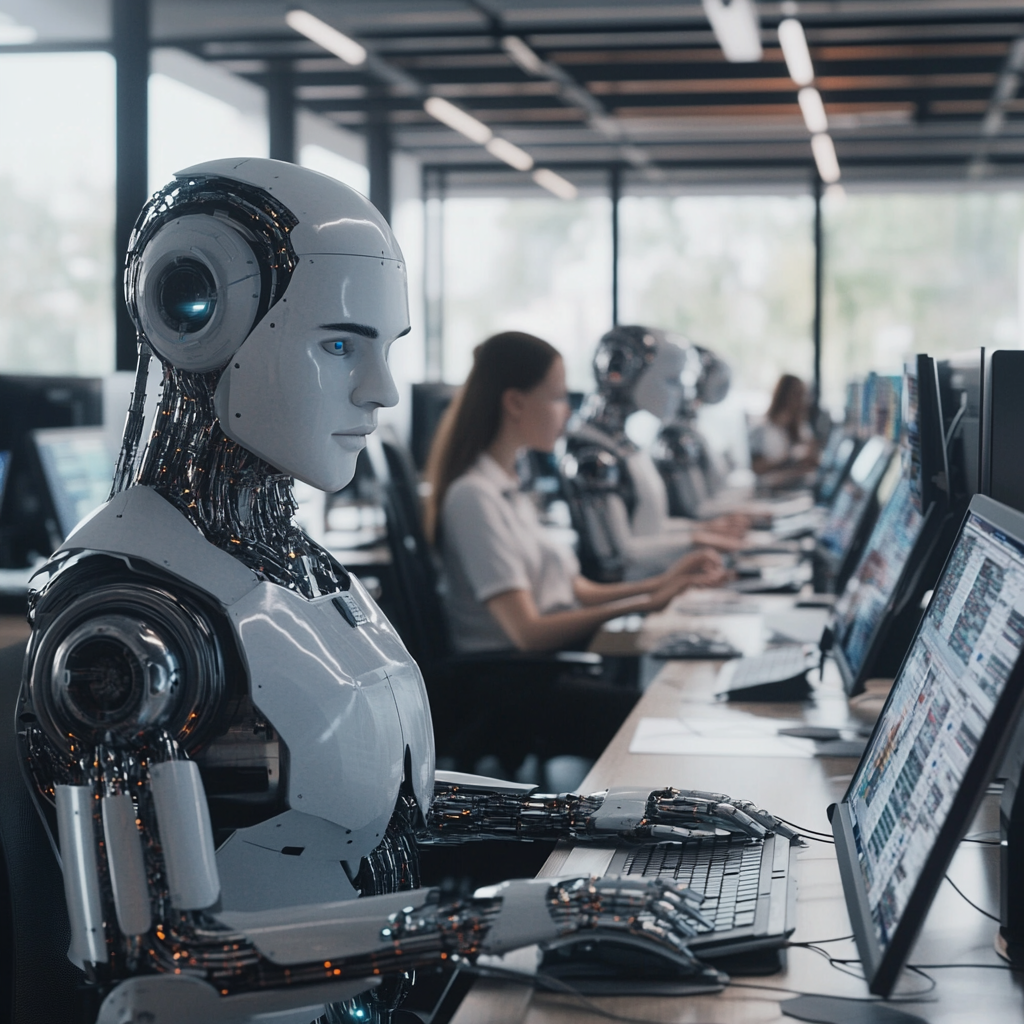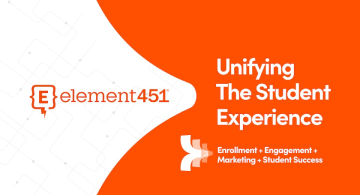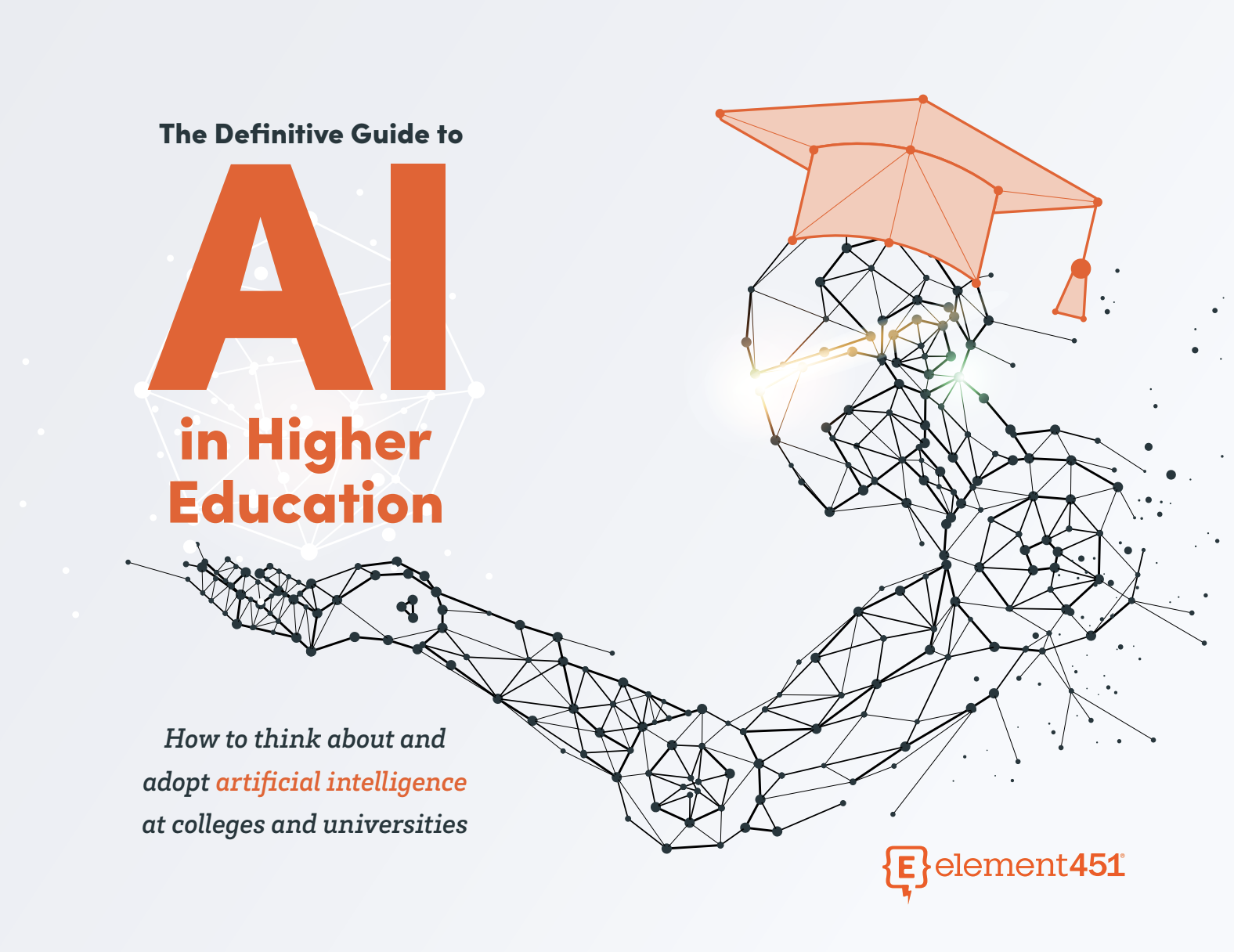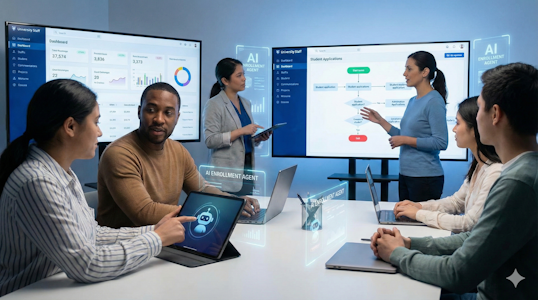Leading and Working with Multi-Agent AI Systems in Higher Ed
by Ardis Kadiu · Jan 31, 2025

I’ve spent years building technology to help organizations work smarter, but AI is now pushing us to rethink work itself. As a founder and leader, I’ve always asked: how can we make work more effective, more human, and more meaningful? The answer increasingly involves AI—but not in the way many people assume. It’s not about replacing people. It’s about redefining roles, collaboration, and impact.
In the latest episode of Generation AI, we explored the concept of multi-agent AI systems—teams of AI assistants designed to handle specific tasks, working together like a well-coordinated team. These AI agents aren’t tools; they’re role-specific digital colleagues that will soon be as essential as our human teammates. Let’s break down what that means for the future of work.
From Job Descriptions to Digital Colleagues: How AI Assistants Fit Into Teams
Think about how we build teams today. When hiring, we define clear job descriptions, ensuring each role has a purpose that contributes to the organization’s goals. Multi-agent AI systems work the same way, but instead of hiring people, we “hire” AI assistants that specialize in certain tasks.
Imagine a marketing department that needs to run a new campaign. Instead of a single AI tool, a team of AI assistants could work together:
- The Marketing Strategist Assistant analyzes audience data and market trends to develop a plan.
- The Content Creator Assistant drafts compelling messaging and visuals.
- The Data Analyst Assistant tracks engagement, optimizing campaigns in real time.
Each AI has a specific function, just like human employees. And just like in a high-functioning team, these assistants collaborate, passing work between them to create a seamless process.
What Agentic AI Really Means
Agentic AI represents a major leap in how we integrate AI into our organizations. Instead of simply automating tasks, these AI systems act with autonomy within their defined roles, making decisions, adapting to new data, and coordinating with other AI agents to drive results.
Take customer service, for example. In the past, chatbots were limited to basic responses, and anything beyond their programming required human intervention. With an agentic AI system, multiple AI assistants collaborate: one detects sentiment, another retrieves relevant knowledge, and a third generates responses. This seamless coordination creates faster, more intelligent interactions that enhance customer experiences.
Higher education provides another powerful example. A traditional chatbot can answer FAQs, but an AI assistant for student success can do much more. Imagine a student struggling in a course who reaches out to their college's AI assistant. Instead of simply providing a link to tutoring services, an agentic AI system would:
- Analyze the student’s academic records, past behavior, and prior interactions with the AI.
- Assess the current conversation to determine whether the student needs academic help, emotional support, or another resource.
- Act on behalf of the student by setting up an in-person or online tutoring session based on their schedule and past preferences.
This type of AI doesn’t just answer questions—it proactively supports students by understanding their unique situations and taking meaningful action to improve their academic experience.
By designing AI systems that mirror the way human teams operate, we open the door to more efficient, responsive, and scalable organizations.
Are AI Assistants Actually Helping? Three Ways to Measure Success
If AI is going to be part of our teams, we need to measure its effectiveness. To do so, we need a structured approach to measurement. In Generation AI, we outlined three essential ways to evaluate AI’s contributions:
- Performance Comparison: AI should not only match but exceed human performance in certain tasks. This means assessing AI-driven workflows against traditional human-led processes. In higher education, this could mean comparing AI-assisted admissions processing to human-only workflows. Are AI-powered systems processing applications faster, reducing wait times, and improving applicant engagement? Has the cost to enroll one student decreased with AI-driven marketing and outreach?
By analyzing task completion rates, accuracy levels, and applicant satisfaction, institutions can determine whether AI is making recruitment and enrollment processes more efficient. Forsyth Technical Community College is one such example. Since adopting our AI-first CRM, Forysth has seen a 31% conversion rate from prospect to applicant, which far exceeds industry standards. - Financial Framework – Individual Level: AI’s impact should be measurable at the level of the individual contributor. In higher ed admissions and marketing, this could mean evaluating how AI supports enrollment counselors, financial aid officers, and student support teams.
Johnston Community College, for example, saved 30,000 staff minutes by using our AI chatbot for student inquiries, allowing staff to focus on 1:1 student support. If AI enables an admissions officer to manage a larger applicant pool while maintaining or improving yield rates, this translates into lower recruitment costs per student and higher enrollment rates without additional staffing expenses. - Financial Framework – Institutional Level: AI should create measurable value at an institutional level. Are AI assistants helping increase student retention, improving operational efficiency, and lowering costs? Universities and colleges can track key indicators—such as reduced time spent on manual processes, lower student acquisition costs, and improved retention rates—to determine whether AI is delivering financial benefits.
For instance, if AI-powered retention tools proactively identify at-risk students and direct them to support services, institutions can improve persistence rates and reduce revenue loss from student attrition. Similarly, AI-powered financial aid advising could streamline award processing, reducing administrative overhead and increasing student satisfaction.
Within Element451, we’ve seen AI assistants free up our own teams to focus on strategy rather than manual tasks. AI is also boosting productivity by turning research projects, for example, that normally might take a full day into an hour-long activity. That’s the true potential of AI: enabling people to do their best work while ensuring measurable financial and operational benefits at both the individual and organizational level.
Looking Ahead: What’s Next in This AI Revolution?
As AI takes on more responsibility, leadership will evolve. Instead of managing only people, leaders will manage both human and AI team members. This shift requires new skills:
- AI Oversight: Understanding when to trust AI and when human judgment is needed.
- Strategic AI Integration: Knowing which tasks to delegate to AI to maximize efficiency.
- Human-AI Collaboration: Fostering a culture where AI supports people, not replaces them.
Leaders who embrace AI as a teammate—not just a tool—will build more agile, innovative, and competitive organizations.
Multi-agent AI systems are just the beginning. In the next episode of Generation AI, we’ll explore how organizations can seamlessly integrate AI into their workflows, ensuring smooth collaboration between human and digital colleagues.
The future isn’t AI versus humans. It’s AI with humans, unlocking new possibilities for how we work, create, and lead.

About Element451
Boost enrollment, improve engagement, and support students with an AI workforce built for higher ed. Element451 makes personalization scalable and success repeatable.
Categories
New Blog Posts

The Definitive Guide
AI in Higher Education
Bridge the gap between the latest tech advancements and your institution's success.
Useful Links
Related Articles

Talk With Us
Element451 is the only AI Workforce Platform for higher education. Our friendly experts are here to help you explore how Element451 can improve outcomes for your school.
Get a Demo









